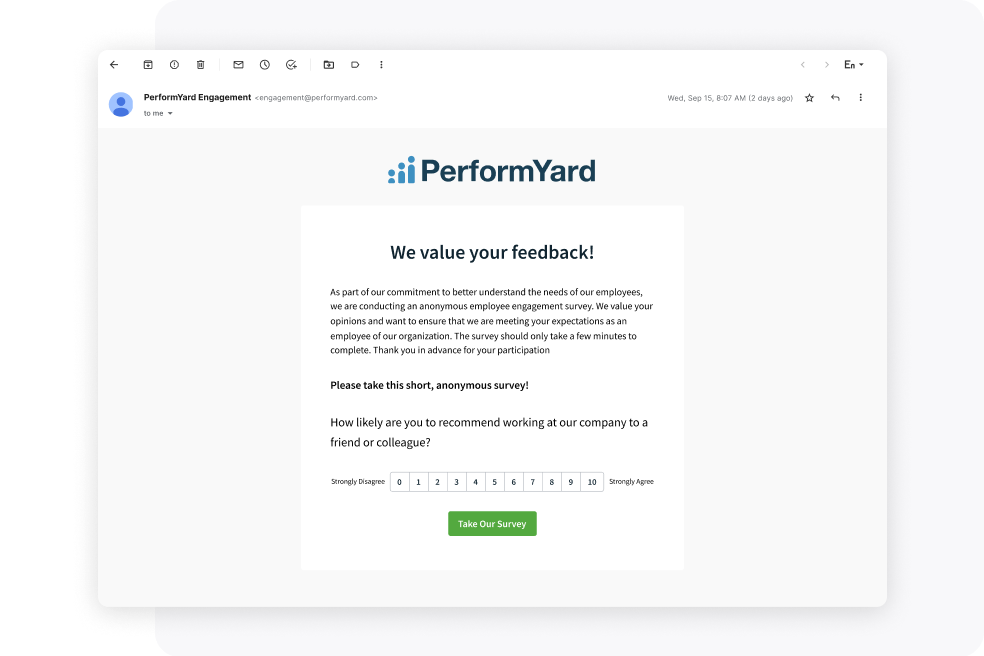How to Mirror Microsoft’s Approach to Employee Engagement
Microsoft has become a benchmark for employee engagement through its innovative, inclusive, and empathetic workplace culture. Under the leadership of CEO Satya Nadella, the company has shifted from a culture of internal competition to one of collaboration and continuous learning.
This article explores what makes Microsoft’s approach unique and how other organizations can emulate its success.
The Core of Microsoft’s Engagement Strategy
At the heart of Microsoft’s approach lies a commitment to fostering empathy, growth, and inclusion. This philosophy is reflected in several key areas:
- A Growth Mindset Culture - Inspired by Kathleen Hogan, Microsoft champions the belief that everyone can improve and learn. Employees are encouraged to take risks, embrace challenges, and view setbacks as opportunities. This mindset drives innovation and collaboration. It empowers employees to experiment and grow.
- Technology-Driven Engagement - The company uses its tools, like Microsoft Viva, to embed well-being and engagement into daily workflows. Viva's modules, like Insights (for mental health) and Goals (for productivity), support employees.
- Diversity and Inclusion - Microsoft actively supports underrepresented groups through its Employee Resource Groups (ERGs) and inclusive policies. Initiatives like GLEAM and inclusive benefits for suppliers show a strong commitment to a valued workplace for all. (GLEAM is for LGBTQIA+ Employees and Allies at Microsoft.)
The Business Case for Employee Engagement
Microsoft’s focus on employee engagement isn’t just about creating a positive workplace culture—it directly supports business success. Here are some tangible benefits the company has realized through its approach:
- Increased Innovation and Productivity - By fostering a growth mindset, Microsoft empowers employees to experiment, take risks, and learn from failures. This culture of innovation drives breakthroughs in products and services, helping the company maintain its competitive edge.
- Higher Retention and Reduced Turnover Costs - Engaged employees are more likely to stay with their organizations, reducing the high costs associated with recruiting and onboarding new hires. Microsoft’s inclusive policies and tools for employee well-being contribute to a workplace where people feel valued and supported, resulting in greater loyalty.
- Enhanced Customer Satisfaction - A highly engaged workforce leads to better customer interactions. Microsoft’s commitment to employee satisfaction translates into improved problem-solving and customer service, strengthening relationships and brand loyalty.
- Stronger Employer Branding - Microsoft’s reputation as a great place to work attracts top talent. In an increasingly competitive labor market, a strong employer brand is essential to securing the best candidates. The company’s focus on inclusivity and professional growth is a significant draw for prospective employees.
How to Emulate Microsoft’s Approach
Microsoft’s journey to becoming a leader in employee engagement didn’t happen overnight—it began with a clear vision and a commitment to meaningful change. If you’re inspired to emulate their success, here’s how to take the first steps toward transforming your workplace into a hub of innovation, inclusion, and well-being.
1. Assess Your Current Engagement Practices
Start by understanding where your organization stands today. Conduct surveys or focus groups to gather honest employee feedback on areas like communication, inclusion, well-being, and growth opportunities. Use tools like employee Net Promoter Scores (eNPS) or engagement pulse surveys to measure satisfaction and identify pain points.
Key questions to ask:
- Do employees feel valued and supported in their roles?
- Are there barriers to collaboration or innovation?
- How aligned are employee goals with the company’s mission?
- This self-assessment will provide a roadmap for where to focus your efforts.

2. Leverage Tools Like PerformYard
Transforming workplace culture requires the right tools. PerformYard offers a comprehensive platform for performance management, enabling organizations to:
- Facilitate regular feedback conversations to support a growth mindset.
- Align employee objectives with larger company goals using intuitive goal-setting features.
- Track performance metrics and analyze trends to identify areas for improvement.
By integrating such tools into your daily workflows, you can make employee engagement a seamless part of your operations rather than an occasional initiative.

3. Start Small and Scale Strategically
You don’t need the resources of a tech giant to get started. Begin with focused, high-impact initiatives tailored to your organization’s unique needs. For instance:
- Introduce flexible work options to support work-life balance.
- Launch a pilot mentoring program to encourage knowledge-sharing and growth.
- Recognize employees’ contributions with simple, authentic gestures of appreciation.
As you see results, scale your initiatives and broaden their reach. A series of small wins can help build momentum for more extensive cultural transformation.
4. Commit to Transparent and Empathetic Leadership
Leadership sets the tone for engagement. Ensure leaders at all levels communicate openly, acknowledge challenges, and show genuine care for employees’ well-being. Regular town halls, one-on-one check-ins, and opportunities for employees to share their voices can foster trust and alignment.
Remember, employees who feel heard and supported are far more likely to be engaged and motivated.
5. Measure, Refine, and Celebrate Success
Employee engagement is an ongoing process. Establish clear metrics to evaluate the effectiveness of your initiatives, such as:
- Improvements in employee satisfaction and retention rates.
- Increases in productivity and goal achievement.
- Participation rates in well-being or professional development programs.
Celebrate progress, no matter how small. Recognizing achievements reinforces the value of these efforts and inspires employees to stay engaged in the journey.




